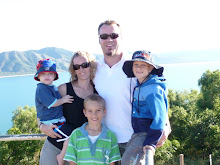Thursday and Friday I attended my orientation days of my EPL. I was very nervous to say the least. I am completing my EPL in a Primary School made up of three (3) classes with a total of sixty three (63) students and three (3) full time teachers, one of which is also the Principal and my Mentor Teacher. I was a little unsure of what ICT's would be available in the school and if any, would the teachers be using them? I was delighted to find that each classroom has ten (10) laptops each, an interactive whiteboard, (that I am itching to learn how to use) and teachers that embrace modern technology & ICT's in learning. The students were into the computer and working on an interactive classroom with the LOTE teacher an hour into my first day. The enthusiasm of the teacher was rubbing off onto the students, and I found myself wanting to learn more and more. Marzano and Pickering;s (2006) DOL 1 explains that teachers need to "Exhibit a sense of enthusiasm about material you present. If you are excited about the content, students may share your enthusiasm." Well I can undoubtedly see this occurring with the LOTE teacher and the students. It was fantastic to be able to watch this happening and to become a part of it. One of the advanced students was able to show me what the class had completed in the past, and what they were engaging in at present. I would love to be able to be a part of their journey but unfortunately I am unable to gain access to that part of learning place. The use of ICTs within this school is very important as there is a high percentage of Aboriginal students that come from the local community, who do not have the opportunity to interact with ICT's outside of school. I have found in the very short time of being there, that ALL students in this particular class are very excited and engaged in leraning with the new ICT's being introduced into the classroom/ learning environment. Another new ICT I have been introduced to over the past week, is Mathletics. What an amazing way for students to gain confidence in their math skills. I have not had the opportunity as yet to see this in action in the classroom, but have been able to go online and view how it all works. I will put further information on my blog once I learn more about this spectacular program.
The class is also involved in virtual contact with other teachers and students in Indonesia. They are able to look up on Google Earth where the students school physically is, enabling them to gain a greater understanding of how far away they are. This is a great way students can learn about Indonesia first hand, through the actual students from Indonesia telling their stories. Marzano and Pickering (2006) states this it is important to "Construct tasks that are 'authentic', that is, related to life outside of school or in the workplace. Students who clearly see the relevance and use of tasks are more likely to be engaged in them." I was in the class when they received their very first email response from the teacher at the Indonesian school, accepting their friendship/contact request the class had submitted in the previous lesson. The look on the students faces was just fantastic. There were looks of disbelief and excitement. The LOTE teacher put this email up on the interactive whiteboard for everyone to see. The students were then able to go online to Google Earth and look up the place the school was at as well as start to research about Indonesia so they could accumulate questions to forward onto the students at the Indonesian school.
This now leads me on to one of the topics for the week 'Google Earth'. As discussed above, there are many ways in which you could use Google Earth in the classroom. After looking at Joe Wood's Blog on Google Earth in the classroom with project based learning, I can see so many more exciting ideas for how we could utilise this amazing ICT. Exploring geographical locations is just the start. Exploring what the terrain is like in certain areas would be interesting. But the exciting thing I came across was using it for a Shakespeare unit to follow where it was set. What a fantastic way to engage students on a subject they may find boring or difficult! I can not wait until I go back to school next week and share with my mentor teacher, the different ways in which it can be utilised.
References:
Marzano, R., & Pickering, D. (2006). Dimensions of learning: Teachers manual (2nd ed.). Victoria, Australia: Hawker Brownlow Education.
Monday, April 19, 2010
Subscribe to:
Post Comments (Atom)





No comments:
Post a Comment